Four on the Floor: Important Things to Consider When Selecting a Four-Wheel Drive Vehicle
Four on the Floor: Important Things to Consider When Selecting a Four-Wheel Drive Vehicle
Quite often, I see posts online from self-proclaimed experts talking about bugging out and overlanding. One of the most common statements made is that a 4×4 or All-Wheel Drive vehicle is essential to your survival. That’s not completely true and a staggering number of people have no idea what a four-wheel drive system actually consists of. Today I want to discuss the differences in vehicle drivetrains and the various options you have off-road when selecting a four-wheel drive system.
Please Note: Off-Road driving and associated activities are inherently dangerous. Consult your vehicle manufacturer or owner’s manual before engaging in any activities outside of normal specified operation. There’s no substitute for training and education and this article should not be considered a replacement for adequate training. Seek training and drive responsibly.
Basics of Power Distribution
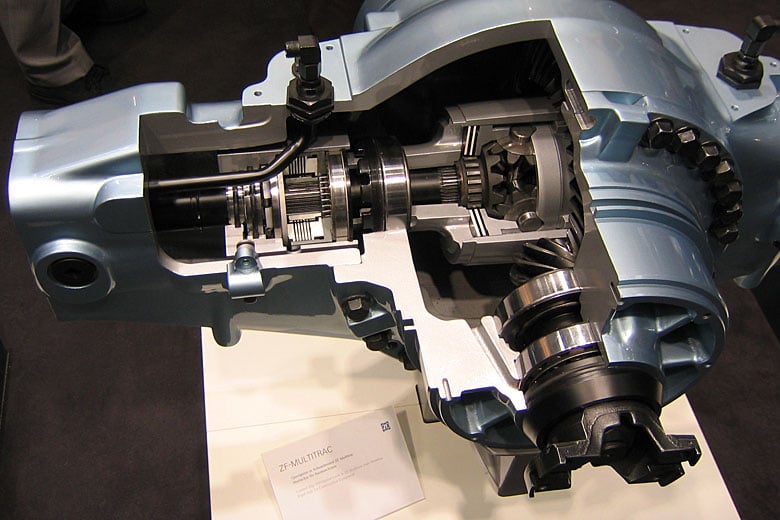
There are four main types of drivetrains for four-wheeled vehicles. Front-Wheel Drive (FWD), Rear-Wheel Drive (RWD), All-Wheel Drive (AWD) and the mighty Four-Wheel Drive (also written 4WD or 4×4). Front and rear-wheel drive vehicles operate just as the name implies. The only statement to be made for either of these options is that they almost entirely operate with “Open Differentials” or “Limited Slip Differentials” (LSD).
AWD and 4WD inherently function the same way, with a few minor differences. A 4WD system usually consists of a transfer case, front and rear drive shafts, as well as front and rear differentials and axles.
The engine puts power through the transmission and that power is transferred to the front and rear through the transfer case. From there, the differentials split the power to the driver or passenger side, respectively.
The main factors at play on AWD systems are sensors and electronic clutch packs in the differentials and/or transfer case. There’s also an intensely complex algorithm that applies brakes to any one wheel at a time. Many early vehicles used Limited Slip Differentials and a considerable number of manufacturers are still using an electronic variant of the LSD. Through a combination of gearing and clutch packs, when one wheel begins to lose traction, the torque is instantaneously split between all wheels with traction.
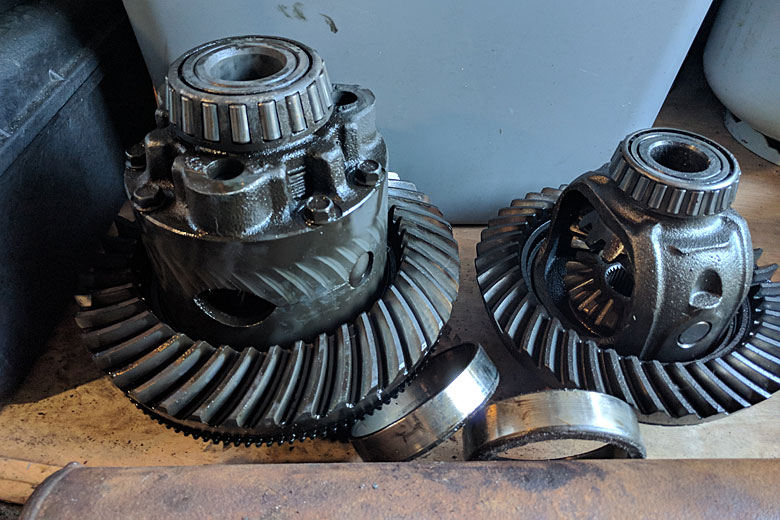
The variations on where each manufacturer uses mechanical vs. electronic drive line components will make your head spin. I personally can’t guide you on which AWD system is best for your needs here, but based on my experience with them, I’d say they’re all better than a two-wheel drive counterpart if you regularly find yourself in low traction situations.
AWD systems are normally geared toward on-pavement applications, so long as the All-Wheel Drive feature is a primary selling point. Vehicles sold sporting the “AWD” badge will almost always be full-time All-Wheel Drive. Many cars and small SUVs that feature an AWD system will outperform two-wheel drive vehicles in nearly every scenario you’ll encounter in daily life. The traction and response is simply better on four wheels than on two when the roads become icy, wet, muddy, or snow-covered. Having traction managed by computers and mechanical LSD’s is far more favorable. Where these systems begin to fall short though, is during intense off-road scenarios.
Enter the 4×4 system. Technically speaking, when a 4×4 vehicle is operating with open differentials, it can still be upstaged by an advanced AWD system. Losing traction on any one wheel can cause the vehicle to become completely stuck on the most basic of four-wheel drive systems, whereas AWD computers will stop the traction loss and divert power where needed. Next, we’ll discuss how manufacturers have modified their vehicles and how we can use that information to make the vehicles perform better. Remember, a bug-out vehicle is only as good as its driver.
Four-Wheel Drive Operation
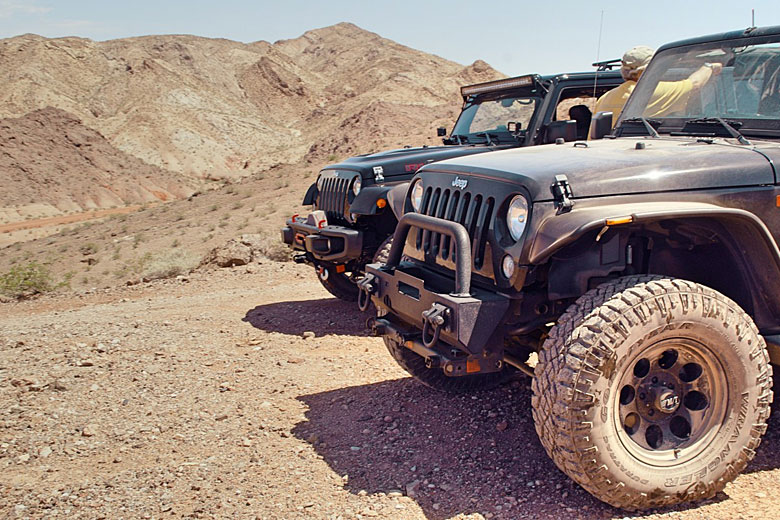
One of the more common configurations for a 4×4 vehicle is the full-time RWD, part-time 4WD setup. The vehicle operates in RWD most of the time, but in low traction, the transfer case can be engaged to set the vehicle in 4WD.
Alternatively, my Hummer H3 functions in 4WD all the time, with options for lockers on the transfer case and differentials, in addition to an advanced traction control system. Earlier models of four-wheel drive vehicles didn’t offer much more than “open differentials,” but more recently, we’ve seen LSDs as standard equipment. Along with these mechanical Limited-Slips, advanced traction control systems have begun making a more pronounced appearance.
The market for off-road capability has grown exponentially in the last few years, thanks to the mainstream introduction of overland travel. It seems more millennials are opting for a tiny home on wheels over a mortgage payment and this adventure travel lifestyle can’t be had without certain, less common vehicle attributes. Thanks to this demand, the competition has become quite stout, leading to more interesting innovations.
There are inherent flaws in the most basic of 4×4 drivetrains. If you lift the vehicle off the ground and spin one tire, you’ll notice the tire on the other side spins the opposite direction. Due to the design of the open differential, wheels are allowed to spin opposite of each other. This is a great feature when taking sharp turns on dry pavement, however the vehicle can lose the ability to move at all if only one wheel loses traction. As the transfer case operates very similarly to a differential, all of the output from the engine can be lost to just one wheel.
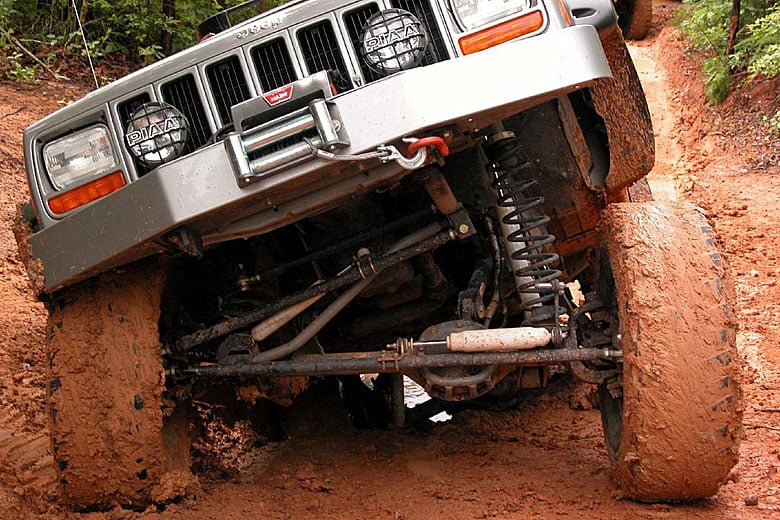
Lockers were the answer for most hardcore off-road enthusiasts, while the LSD was the best option for the auto manufacturers. Lockers are exactly what they sound like, they lock the transfer case shafts and axles shafts together in a temporary configuration during periods of extremely low or total loss of traction. Normally they’re manually engaged by the driver and use electronics or compressed air to activate.
Limited-Slip Differentials perform very well in mild situations where only a small amount of locking force would be necessary to move the vehicle. They’re more for something like a mud puddle on a mild dirt road or trail than a rock crawling scenario. The LSD is always engaged as the springs and clutch packs are constantly applying pressure across the axles. This allows them to slip on tight turns, but provides more traction in off-highway scenarios.
While Lockers and Limited-Slip Differentials are usually the most common in off-road vehicles, there are other options out there. Detroit Lockers and Torsen differentials are also great options for certain applications, but I have to advise speaking to your local off-road outfitter to see if these are suitable for your vehicle. Torsen differentials, also called “planetary gear lockers,” are the same device used in the military Humvee. They feature a series of worm gears surrounding a pair of spur gears. Spurs can turn worms, but worms can’t turn spurs. When there’s a loss of traction, the gears bind and lock the axles until the wheels can move together again.
Straight/Solid vs. Constant Velocity Axles
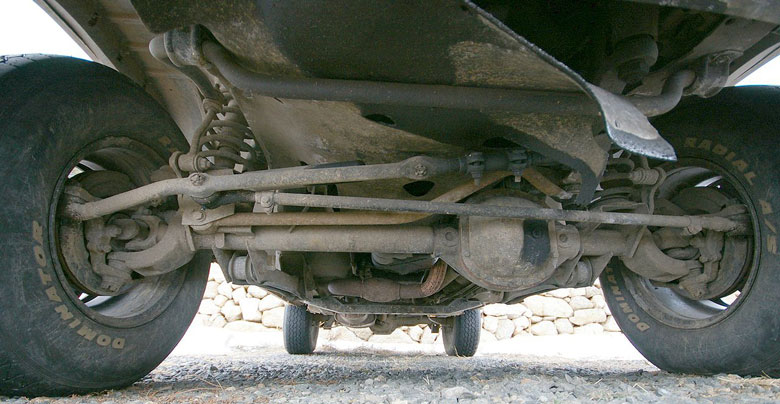
Straight axles vs. CV axles is a tired argument. Straight axles run from the center differential gears out to the wheel hubs inside a straight tube called the axle shaft housing. Constant Velocity axles (CV’s) are connected to the differential at a constant velocity link (also called a U-joint) and connect to the wheel hub the same way. These axles are used in Independent Front/Rear Suspension (IFS/IRS) vehicles. Straight axles hang lower to the ground than their IFS/IRS counterparts, but have a reputation for being much stronger than CV’s.
As a fun fact, front straight axles also use a type of CV at the wheel hubs and they break just as frequently when improperly driven. I haven’t personally seen one style break more often, except when poor driving ability overcomes the strength of engineering. Also keep in mind that parts wear out and break; it’s part of wheeling.
Straight axles can offer more articulation in extreme off-camber situations and this is why they’re most often selected by enthusiasts. They’re also less fragile with regard to making contact with the ground below your rig. As an example, the Jeep Wrangler has solid axles in the front and rear. They articulate well off-road and they’re much stronger if the axle housing impacts a hard, immovable object.
On the opposite end, CV axles can offer articulation in unique circumstances. For instance, the AM General HMMWV (Humvee) uses CV axles (called half shafts). The brake discs are inboard near the differentials and the emergency brake discs are on the drive shafts. The exception here is that the Humvee features gear boxes at the wheel hubs to drop the output shaft several inches lower, so that an increased ground clearance can be achieved. Which axle configuration you choose is entirely up to you. IFS/IRS vehicles tend to offer more initial ground clearance, but they may be limited in articulation ability. CV axles are also more susceptible to breakage from impacts on rocks and other hard objects.
Avoiding Breakage
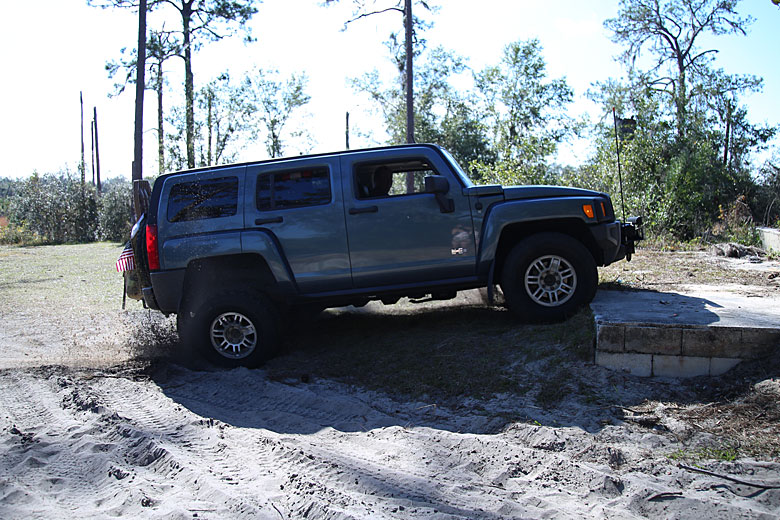
I’ve said it before and I’ll say it again, the skinny pedal is usually not the answer. The idea of bugging out is to maintain a good pace through obstacles and evade your pursuers. Overlanding is essentially the same thing, except no one is actually chasing you. Let’s cover a few things to keep your rig functioning under fire.
We’ll address axle configuration first. Using CV’s increases breakage of steering components and suspension components under certain circumstances. As an example, trying to turn your wheels when the vehicle is in a nose-down position will stress the ball joints and can cause very serious breakage. If you’re doing this often, try to achieve the straightest position possible for your wheels and hold to it. Turning with the weight on your front wheels should only be done in the event of imminent danger or other emergencies.
A gentleman working for a vehicle tour company in Utah once broke a ball joint during a tour. He held the brakes for nearly eight hours while his mechanics replaced the joint so he could drive off of the obstacle. Rolling forward prior to this point would have caused massive damage to the truck because the wheel would have likely ripped the CV and additional components out of their position.
Not to be underscored, solid axles have their own set of problems. Steering components can be badly damaged by moving too quickly and impacting hard objects underneath the vehicle. With both configurations, forcing the steering wheel to turn to one side or the other can damage vital steering tie rods, track bars and knuckles. If you need more than a reasonable amount of force to turn the steering wheel, you’re likely on a line that could damage the truck. There will be resistance, but if you’re having to fight it then you’re stressing the truck too much.
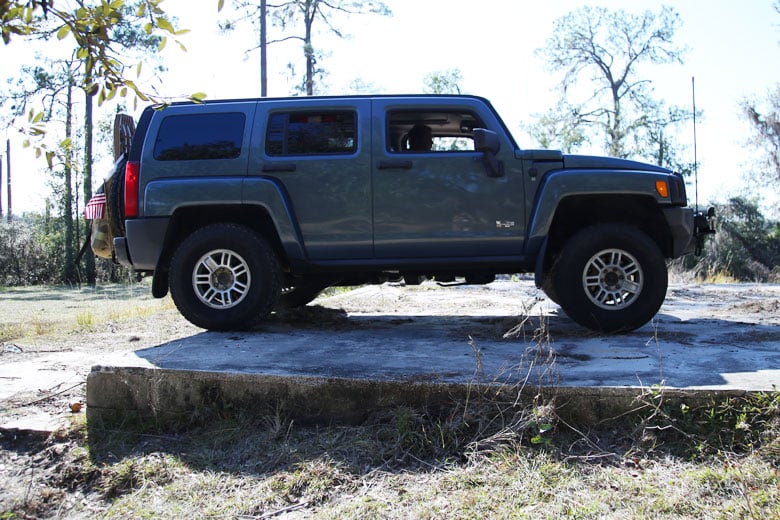
The “Bump” or “Jeep Bump” is a common technique when climbing over rocks and ledges. This is when you encounter an obstacle that allows the front wheels to climb, but then causes the truck’s back tires to spin and bounce against a rock face or ledge. The driver will back up until the front tires are ready to come off the ledge, shift into a forward gear and then use some speed and momentum to bring the back tires over the ledge. The back tires typically hang here because the front wheels are too light to pull the vehicle once the center of gravity shifts to the rear. The bump gives enough momentum for the vehicle to clear the obstacle. This is a technique I advocate and one that I use often under the right circumstances.
There are some important things to remember when using this technique. First, don’t use more speed than you reasonably need, as it can cause broken axles and CV’s. The reason for this breakage is that the vehicle bounces or lifts a wheel and once it makes contact with the ground again, the kinetic energy is loaded into the axles and eventually, something breaks.
Slow down and don’t stay on the accelerator during these climbs. If you’re finding that the vehicle isn’t climbing well, try reducing your tire pressures and engaging your lockers, if equipped. Use your Low (Lo) gear range to let the vehicle work for you. There are times when the gear ratios in high range are simply too fast to climb without skipping the tires.
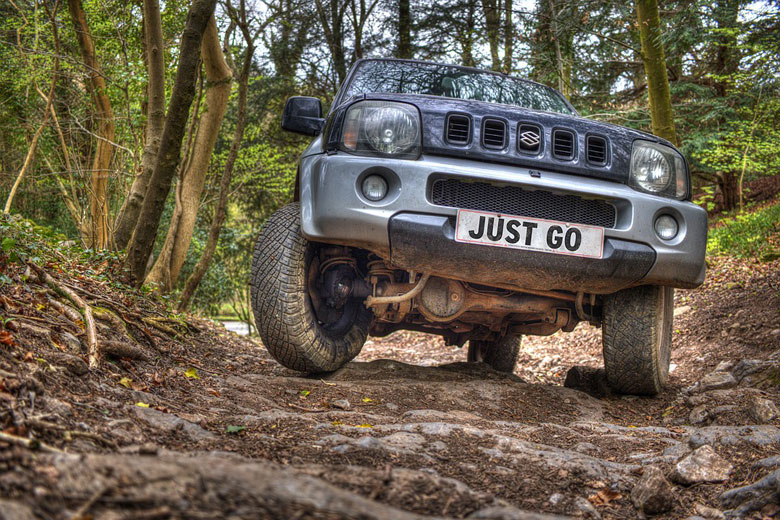
Traction control systems are designed to work in a way that makes sense to the average person. Having driven multiple vehicles off-road, I had to learn the following lesson after a great deal of struggle. If you’re running open differentials with a traction control system, normally the brakes and throttle are controlled by the computer. Pressure will be applied to the brake on the wheel that’s slipping and it will divert traction to the remaining wheels to complete your maneuver.
In our H3, we can simply apply constant, light throttle pressure and the truck will continue to work underneath our feet. Any pressure on the brake pedal will cancel the traction control inputs and confuse you to the point of frustration. If this is your setup, use your emergency brake to hold yourself on certain obstacles and then use only the accelerator to keep your traction control systems happy. Don’t forget to disengage the emergency brake after you clear the obstacle.
Ascending and descending obstacles that are muddy or otherwise slippery comes with a unique set of challenges, both mentally and mechanically. First, let the vehicle do what it was designed to do. For long climbs, pick a high gear in your low range and stay on the accelerator until you’ve cleared the obstacle. When descending on this kind of terrain, drop the transmission and transfer case into the lowest gear possible. Also try to avoid using the brakes, as this can cause all wheels to lock up and put you in a sideways slide. Use the engine and transmission to slowly roll down the obstacle. You’ll be safer and you’ll look cooler.
Conclusion

If you’re looking for a bug out vehicle, try to keep your rig as close to stock as possible. A small lift and an increase in tire size is really all you need. (If you need anything at all.) Manufacturers design their vehicles to function under certain conditions and extreme modifications to the drivetrain or wheels can dramatically shorten the vehicle’s lifespan. There’s nothing wrong with putting your truck up on 37” tires, but consider the drivetrain and possibly upgrading those components as well.
I encourage you to read your vehicle owner’s manual and join groups of enthusiasts for your vehicle. Do your homework on the vehicle and be very careful what advice you take on how to drive. You’re the one that has to make the car payment and at the end of the day, you’ve still got to drive it home. As usual, don’t forget to ask any questions in the comments below!
Editor-in-Chief’s Note: Derek Gill has been a Plank Owner here at ITS from the beginning and has an extensive background in healthcare, pharmaceutical research and technical diving. He’s been certified in SCUBA since 2000 and diving technical/CCR since 2010. He speaks several languages including Russian and Spanish as well as several computer languages. These combined skills have opened the door to more creative ventures in Network Security and Physical Security consulting. Derek is a veteran of the US Navy and a former Navy Corpsman who worked alongside the US Marine Corps. His military nickname, “Witch Doctor,” has stuck with him ever since and it can now be found across many internet forums where he takes pride in trolling sensational zealots from multiple industries.







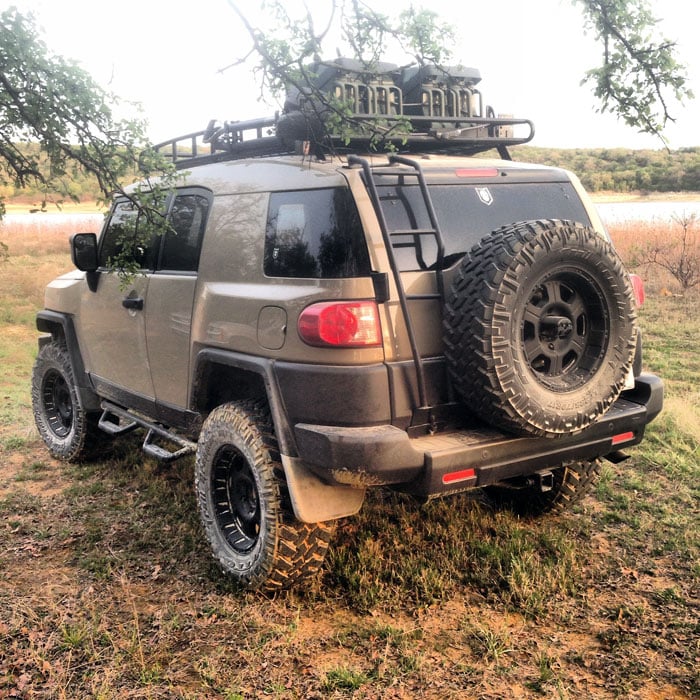
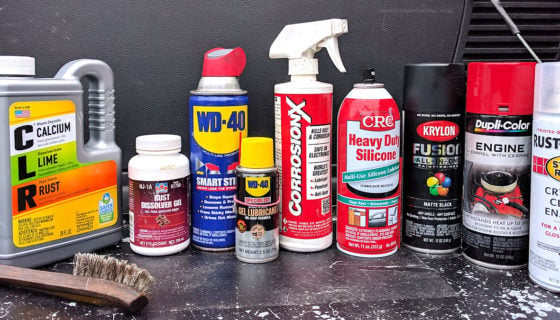
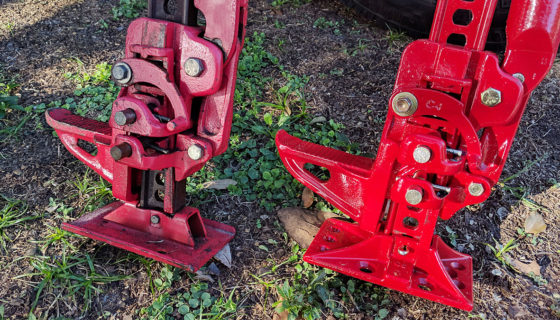

Discussion